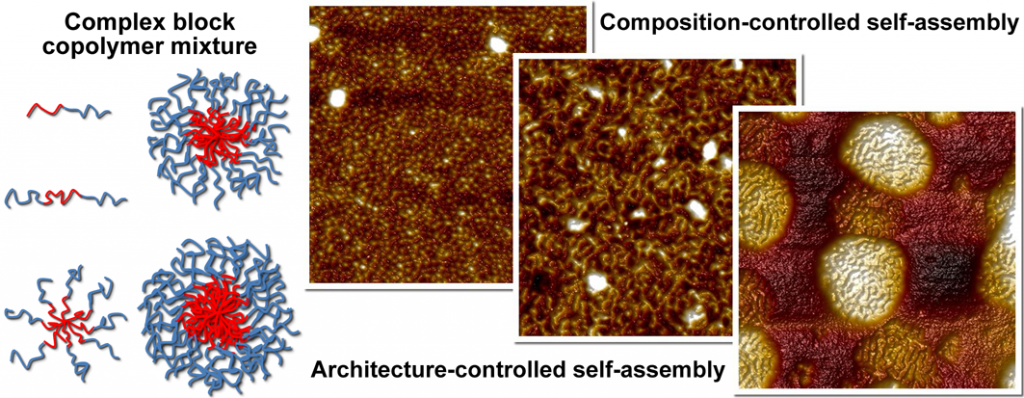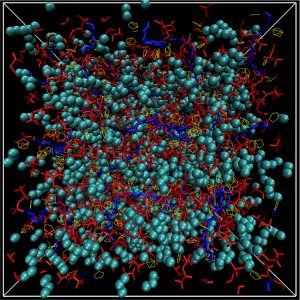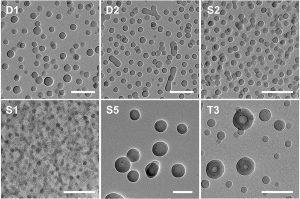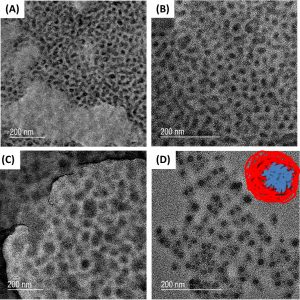
By Whitney Heins
Soft materials intersect our daily lives at about every turn. These are materials that can be easily deformed by thermal stresses or thermal fluctuations at around room temperature. Whether it’s a dying cell phone battery or a broken refrigerator, most people know there’s room for improvement.

CBE faculty members are making great strides to do this. Take, for example, the cutting-edge investigations into polymeric liquids being done by Bamin Khomami, Beaman and Granger Distinguished University Professor and department head, and Brian Edwards, professor and associate department head.
These bizarre materials can display physical properties of both solids and liquids and, thus, are the basis of production for a myriad of consumer products such as plastic containers, clothing, packaging materials, structural components, furniture, building products, and more.
Using the power of some of the world’s fastest supercomputers, Edwards conducts simulations to understand how these materials behave in their molten state during industrial processing. A better understanding of this can lead to more efficient industrial processes—and thus better products  for you and me.
for you and me.
“New and improved models of polymeric flow behavior will result in the industrial production of new and improved products that will benefit everyone,” he said of his NSF-funded research.
For example, products can become stronger, miniaturized, and functionalized.
“Imagine a thin plastic wire the thickness of a hair that is stronger than steel and could conduct electricity,” Edwards said.
Work by other CBE researchers also promises to improve the products we use in our daily lives.
Associate Professor Manolis Doxastakis is looking to unlock the potential of elastomers, or rubbers. Using computational methods, he examines their molecular level structure and then predicts their macroscopic behavior. Specifically, he tries to answer “what if” questions by modifying the coupling of polymers and particles to change the material’s behavior. He also uses computational modeling to try to improve semiconductors by examining how small molecules move through a thin polymer film that’s undergoing a chemical reaction. His findings could lead to better everyday products from tires to computers.
“We are aiming to improve performance, lower cost, and preserve the environment,” said Doxastakis.

Assistant Professor Joshua Sangoro’s work is also aiming to make soft materials better but he’s looking at something different—ionic liquid, or liquid salt. His work holds promise to improve almost every corner of our technological world.
“I’m of the opinion that there are ionic liquids suitable for nearly every technology. The task is to find the optimal one,” Sangoro said.
But, the task is almost akin to finding a needle in a haystack. Ionic liquids have a large variety of potentially available cations and anions, which means they hold the possibility of creating trillions of chemically distinct materials, each with different properties and uses.
“This vast number of chemical structures require scientific design criteria based on understanding of the correlation between structure and desired properties,” Sangoro explained.
 He leverages the power of an experimental technique called broadband dielectric spectroscopy to understand the relationship between the ionic liquid’s chemical structures and the resulting properties. This method is only being used by a handful of researchers in the country and uniquely probes the response of materials to electric fields through a wide range of timescales. Timescales determine the dynamics and hence, they determine many physical properties of materials, including the extent to which a material can conduct and store electrical energy.
He leverages the power of an experimental technique called broadband dielectric spectroscopy to understand the relationship between the ionic liquid’s chemical structures and the resulting properties. This method is only being used by a handful of researchers in the country and uniquely probes the response of materials to electric fields through a wide range of timescales. Timescales determine the dynamics and hence, they determine many physical properties of materials, including the extent to which a material can conduct and store electrical energy.
Sangoro’s work, supported by research grants from the National Science Foundation and the US Army Research Office, will lay the scientific groundwork for new materials used in batteries that need less time to charge but hold much more energy.
And that’s good news for those who use cell phones or computers, or, well, pretty much anyone.